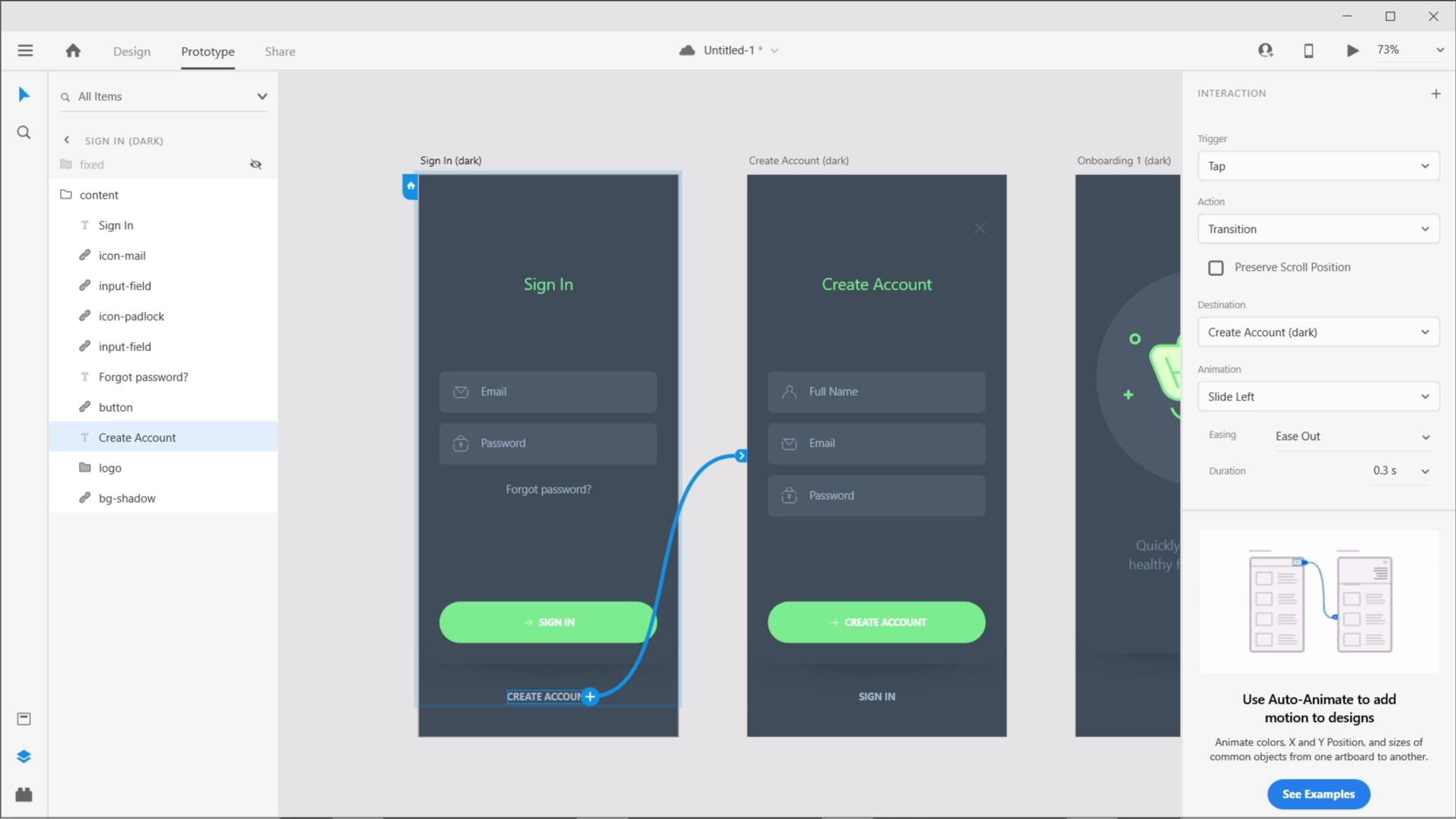

- Adobe xd tutorial prototype how to#
- Adobe xd tutorial prototype code#
- Adobe xd tutorial prototype free#
This was enough to orient me to the major features. To get started, Adobe XD has a built-in tutorial. Not a replacement for Muse, perhaps but an option nevertheless. Finally, Adobe XD comes out of the box with Material Design elements (and others) that I leveraged to make my prototype.
Adobe xd tutorial prototype code#
And while Portfolio is fun & easy to use, no code involved, it also has limitations.įinally, there is Adobe Spark, another Adobe innovation that can be used for creating social graphics, 1 page newsletters, press releases or storytelling. It ties in with Lightroom collections and Behance (another online venue for photographers and designers).
Adobe xd tutorial prototype free#
Portfolio comes free with a paid Creative Cloud plan. Sadly, Adobe has no replacement for Muse except Adobe Portfolio which is an online site builder and portfolio site rolled into one. But basically, If you think you can create a fully functioning web app with XD and no coding skills, you are mistaken.įor those who wish to build web apps visually, have a look at DMX Zone's extensions for Dreamweaver (similar to Muse widgets) or their desktop app called Wappler.
Adobe xd tutorial prototype how to#
It’s a robust tool with a lot of functionality, but you might need some help learning how to use it. I've been asking that same question ever since XD came out. 15+ Adobe XD Tutorials (Beginner to Advanced) Adobe XD is a Photoshop-to-prototype tool that’s part of the Creative Cloud Suite (and our Adobe XD 101 intro is a good place to start).

What's the point in that you ask? I don't know. XD is strictly a prototyping tool for UI/UX designers (think of team settings) where designs are handed off to skilled programmers who then write the necessary code to make it all work. That’s a rapid introduction to prototypes.XD is not a replacement for Muse. Get feedback from other designers on your team before the prototype goes to stakeholders for signoff (if needed) or to your development team.It’s best to focus on the section of the user flow that’s actively being developed or changed. Pick the right prototyping tool for the job.Understand the goals of the prototype and choose the fidelity level that will best accomplish your goal.Adobe XD can be used to design for both web and mobile, and it offers a streamlined workspace to design your experience whilst including simple interactivity that can then be sent to a developer or presented to a client. Keep their needs and goals at the forefront! In my last tutorial, we looked at how Adobe XD can be used to wireframe a mobile app.This time round I’ll share how you can design a visual mockup and prototype. Keep your user research within reach-your users are the whole point of this work.Here are some basic steps to follow as you create a prototype: In fact, with tools like Adobe XD allowing you to create interactive prototypes, it can be difficult to tell the difference between a prototype and the real deal! These envision your design solutions in a way that more closely resembles what the product will look like when it’s developed and live for users. High-fidelity prototypes are, as you might guess, a more polished version. Mid-fidelity prototypes step things up a notch and attempt to incorporate some elements that are closer to the final product-whether it’s a color scheme, placeholder copy (beyond the “lorem ipsum” filler), or other key elements or low-level interactivity. Without any fancy UI elements, images, or copy in place, these are the simplest and easiest way to get a rough idea of what a design solution might look like when it’s implemented. Low-fidelity prototypes are what a rapid prototype is likely to be-they’re quick, simple, and they don’t attempt to look a whole lot like the final product. Let’s learn more about them and how to create a prototype for each. There are three kinds of prototypes: low-fidelity, mid-fidelity, and high-fidelity.

But right now, let’s simply look at the different kinds of prototypes and an overview of how to create one.


 0 kommentar(er)
0 kommentar(er)
